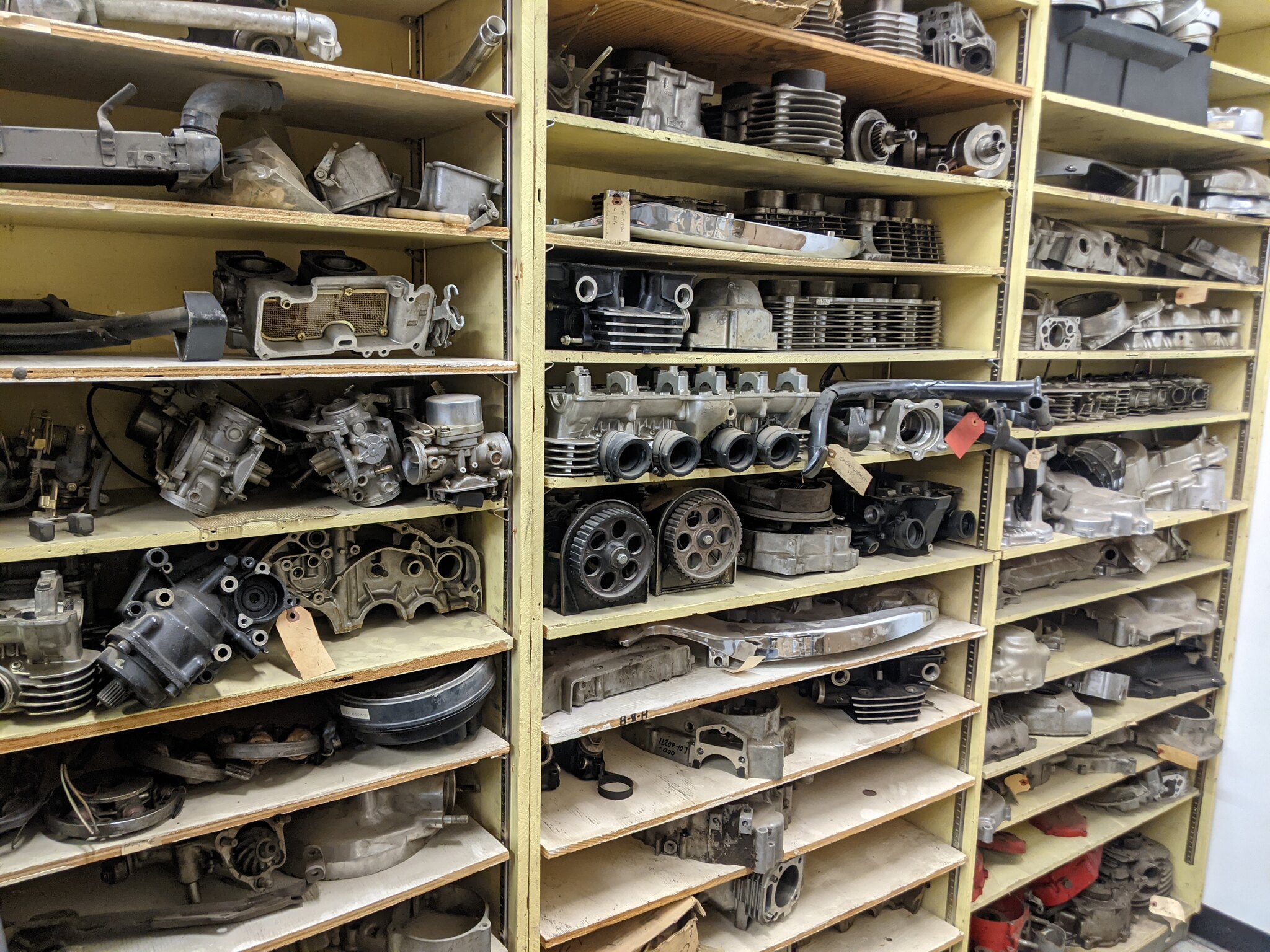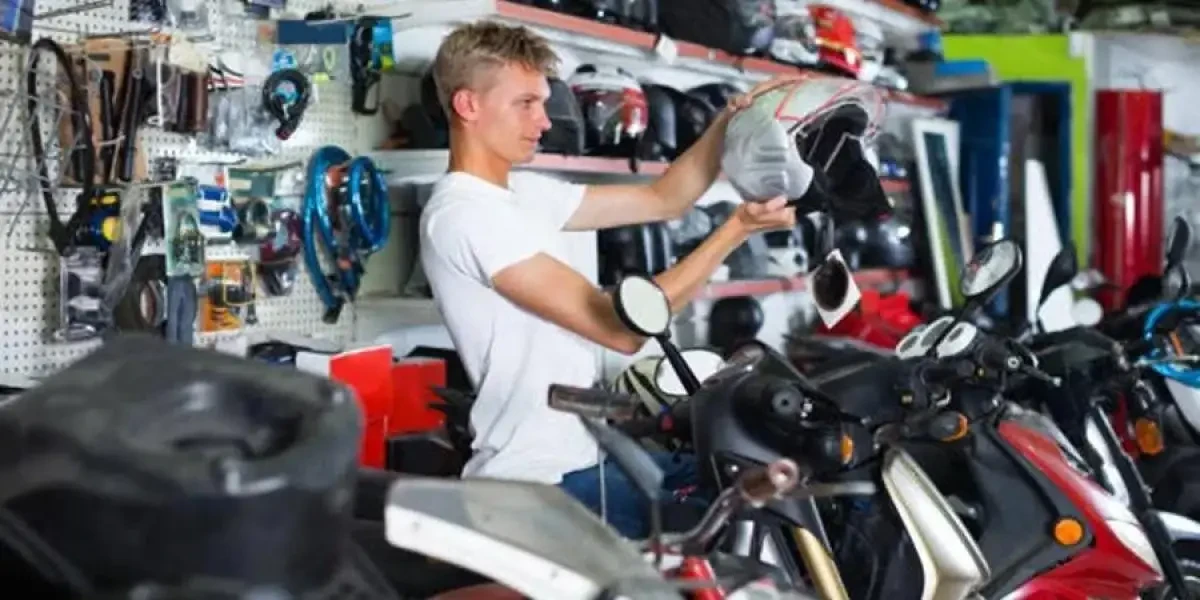Check Out Our Motorcycle Shop for Professional Recommendations and High Quality Products
Check Out Our Motorcycle Shop for Professional Recommendations and High Quality Products
Blog Article
Comprehending the Necessary Parts of a Motorcycle: A Comprehensive Overview for Lovers
For motorcycle lovers looking to raise their riding experience and ensure their bikes run efficiently, understanding the necessary parts of a bike is critical. Each component, from the engine's detailed workings to the essential role of the stopping devices, not just impacts efficiency but additionally safety and security and comfort.
Engine Parts

The camshaft plays an essential function in controlling the timing of the engine's shutoffs, making certain the exact opening and closing essential for reliable fuel and air intake, as well as exhaust expulsion. This timing is vital to keeping optimal engine performance and effectiveness. Additionally, the carburetor or fuel shot system, depending upon the bike version, is in charge of mixing air with fuel in the appropriate ratio for burning.
The air conditioning system, either air or liquid-based, works to maintain the engine's temperature within operational limitations, protecting against getting too hot and making certain longevity - mx gear nz. Each element, thoroughly made and incorporated, adds to the seamless operation of the engine, defining the motorbike's power outcome and total performance
Transmission System
Essential to the bike's capability, the transmission system guarantees efficient power transfer from the engine to the wheels. This system makes up numerous crucial elements, consisting of the clutch, transmission, and final drive, each playing a vital function in translating the engine's power right into motion. The clutch, generally operated by a hand bar, serves to disengage the engine and involve from the transmission, permitting smooth equipment changes and controlled velocity.
The transmission, commonly described as the transmission appropriate, contains a collection of equipments that cyclists can manually change with to change the bike's speed and torque outcome. These gears are prepared in a series that makes it possible for the motorbike to increase efficiently and preserve optimal engine efficiency throughout various rates. Many motorcycles make use of a consecutive gearbox, calling for the motorcyclist to move equipments in an established order.
Braking Systems
While understanding the transmission system is vital to harnessing a motorbike's power, just as important is the ability to regulate and stop that power efficiently, which is where braking mechanisms come right into play. Brakes are vital for safety and security and efficiency, providing the cyclist with the essential control to navigate various surfaces and conditions. Typically, motorcycles include two kinds of stopping systems: disc brakes and drum brakes.
Disc brakes are extra widespread in modern motorbikes you can try this out due to their exceptional performance. They are composed of a brake disc, caliper, and pads. When activated, the caliper presses the brake pads against the spinning disc, converting kinetic power right into warmth, therefore slowing the wheel. This system supplies much better warm dissipation, consistent efficiency, and enhanced quiting power, specifically in damp problems.
On the other hand, drum brakes, though much less common, are still located in some motorcycles. They function by pressing brake shoes against the inner surface of a drum connected to the wheel. While generally less reliable in heat dissipation and quiting power, drum brakes are easier and more cost-efficient.
Understanding these braking systems' subtleties enables motorcyclists to keep their bikes effectively and value the engineering that makes certain secure and effective quiting.
Suspension and Steering
Suspension and guiding systems are crucial elements that significantly influence a motorcycle's handling and trip convenience. The suspension system, including forks at the front and shock absorbers at the back, soaks up roadway abnormalities, improving stability and control. Front forks, inverted or usually telescopic, compress and rebound to alleviate impacts, while back shock absorbers preserve tire call with the road, essential for traction and security.
Guiding, centered around the handlebars, attaches the biker to the bike's directional control. The steering head bearings make certain smooth procedure, allowing precise ability to move. Proper alignment and maintenance of these bearings are crucial for foreseeable steering reaction and decreasing biker tiredness.
The suspension's adjustability is an additional vital aspect; preload, damping, and rebound settings allow modification to suit various riding conditions and designs. This flexibility is crucial for optimizing efficiency, whether browsing city streets or dealing with rugged tracks. Innovations like electronic suspension systems use real-time modifications, enhancing trip quality across varied terrains.

Electric Equipments
After ensuring a controlled and smooth trip through reliable suspension and steering systems, interest turns to the electric systems, a pivotal facet of modern-day motorcycles. These systems play a crucial function not only in beginning the engine yet additionally in powering numerous components that improve the capability and safety of the motorbike.
At the heart of a motorcycle's electrical system is the battery, which shops electric power required for beginning the engine and powering supporting systems - motox parts nz. The alternator or generator, combined with the rectifier-regulator, makes certain the battery continues to be billed while the motorcycle functions, converting power right into electric power and maintaining voltage degrees
The ignition system, one more essential component, is accountable for stiring up the air-fuel mixture in the engine's cyndrical tubes. Modern bikes commonly use a digital ignition system, using better efficiency and dependability compared to standard systems.
Illumination systems, consisting of fronts lights, tail lights, and indicators, are also vital, ensuring visibility and safety for the biker. Additional electronic more helpful hints parts such as sensing units, control systems, and shows add to advanced functions like fuel injection management, anti-lock stopping systems (ABDOMINAL MUSCLE), and electronic control panels, additionally improving the riding experience.
Verdict
A thorough understanding of a bike's essential elements, consisting of the engine, transmission system, stopping systems, suspension, steering, and electric systems, is important for lovers aiming to maximize security, efficiency, and comfort. Mastery of these components permits informed choices concerning maintenance and upgrades, ultimately boosting the riding experience. By browse this site integrating this expertise, bikers can ensure their bikes operate at peak effectiveness and integrity, consequently maximizing both pleasure and long life of their cars.
For motorbike lovers looking to elevate their riding experience and ensure their bikes run efficiently, recognizing the important components of a motorbike is vital.Integral to the motorcycle's performance, the transmission system guarantees effective power transfer from the engine to the wheels.While recognizing the transmission system is key to utilizing a bike's power, equally essential is the capacity to control and stop that power properly, which is where braking mechanisms come into play. Usually, motorbikes include 2 kinds of braking systems: disc brakes and drum brakes.
A detailed understanding of a motorcycle's necessary parts, consisting of the engine, transmission system, braking mechanisms, suspension, steering, and electric systems, is indispensable for enthusiasts aiming to enhance safety, convenience, and efficiency.
Report this page